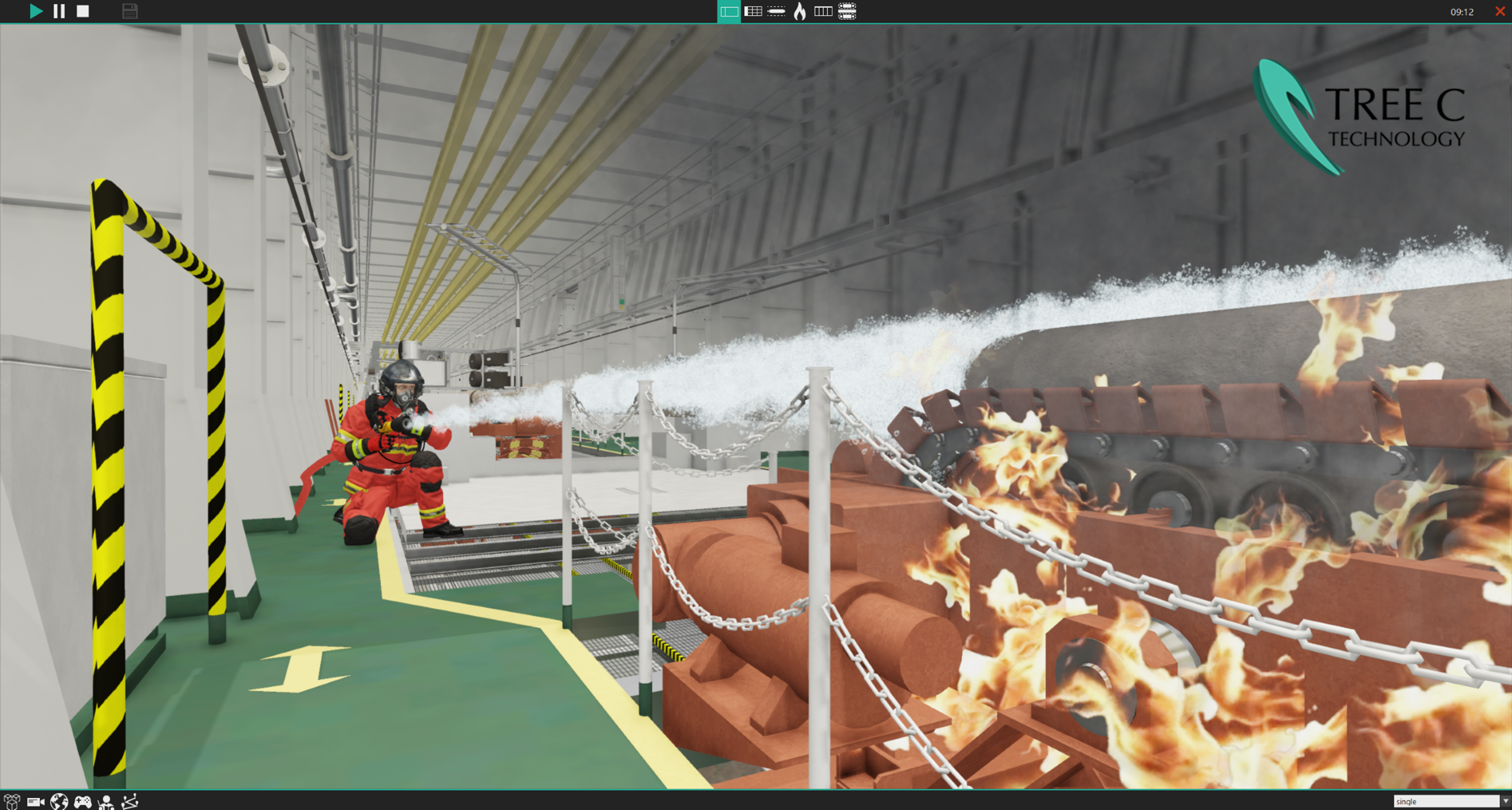Take Offshore Emergency Training To The Next Level With A Tree C Simulator

When your core business operations depend on the safe deployment of vessels, crews, and equipment, risk mitigation is vital. Well-trained crews can make the difference between loss of life and safe return, damage-related delays and fluent operation.
True preparedness goes beyond standard procedural training. Your operators need to practice different emergency scenarios based on real vessels and equipment in a safe environment. With Tree C’s flexible simulator framework, that’s possible from the safety of dry land.
Beyond the boundaries of generic training sims
There’s a storm at sea. A helicopter has collided with one of your vessels and a fire has broken out. There’s a danger to human life and the risk of damage to expensive equipment. The immediate location must be safely evacuated, emergency teams need to be deployed. How does your superintendent and their crew respond?
The best way to prepare for an eventuality like this is to practice it first. A simulator provides a safe environment for training high risk situations, but generic offshore training simulators can only go so far in readying your crews and mainly help provide a more procedural understanding of what to do in an emergency situation.
Practicing how to respond to a fire in a specific area of the ship, using actual controls, and communicating with other crew members – through real-world channels – is another thing entirely and of major importance when you consider emergency scenarios that either arise or could result in machine failure and both man and machine need to be kept safe.
The most valuable training enables crew members to tackle a realistic combination of engineering emergencies and threats to safety. So entire offshore teams can practice their operation, communication, information processing, and decision-making skills in emergency situations. That requires a powerful and flexible training simulator framework with a high level of detail.
Be better prepared for any eventuality
From a loose connection to a helicopter crash, if you can imagine an offshore emergency, we can simulate it. That means it’s possible to introduce conditions that would normally be unsafe for training purposes. You can take any risk because it’s simulated in a safe environment. Like a pilot learning to fly a plane, operators need to practice emergency scenarios and dangerous maneuvers without endangering lives or equipment.
When there’s an emergency in offshore operations, there are many decisions to make in a short space of time. A huge part of training is the teamwork required to bring the situation under control. Communication is key, and the superintendent has to get their priorities straight. Part of the ship may need evacuating. People may need medical attention or rescuing. Machinery might need shutting off or bringing to a certain state to keep equipment – and lives – safe. It’s not a case of simply rehearsing specific roles within the crew, it’s about rehearsing a collective response to an emergency.
So imagine giving your operators a training simulator that faithfully represents your actual vessels, real-world equipment (even adding real controls as hardware-in-the-loop), realistic and configurable conditions at sea, and any emergency scenario you can imagine. That’s all possible with Tree C’s simulator framework.
Through our powerful training module, training supervisors have the ability to pre-program – or spontaneously trigger – different kinds of emergency events at any point in the training simulation, from introducing a machine failure to a fire breaking out. In just a few clicks, trainees can be faced with a huge fire or a malfunctioning piece of equipment.
Simulated CCTV footage gives operators different views of the disaster, so they get a realistic impression of the damage and environment – such as smoke spreading from a fire. At the same time, it’s possible for the training supervisor to select the conditions at sea to give operators a realistic experience of working at sea.
New heights of realism for calamity training
Tree C’s simulator framework enables you to train a complete crew in any imaginable scenario. That makes it a great test bed for developing and rehearsing internal procedures for handling specific emergencies. For example, it can surface issues with communication lines and it can bring to light potential flaws in an emergency response plan.
If you’re already a user of a Tree C simulator, emergency training can be added as an extra feature to your operator training simulator. That’s because our solution is designed to be flexible and multipurpose, from training operatives on a new piece of equipment to practicing teamwork during an emergency.
To further heighten the training experience, some of our clients go even further. An example of such advanced use is the pipe-lay simulator Tree C develops for, and in co-development with, Allseas. In close cooperation with the Allseas training department, realistic calamity scenarios are implemented into the simulator and embedded into the training curriculum by Allseas’ trainers. Avatars– like other crew members and firemen – take part in the action, based on an interactive path finding system, further increasing the realistic experience.
For crew training, they set up workstations in different rooms, to simulate the reality of being in different locations when disaster strikes. They even introduce actors into the situation, for life-like audio communication training and testing the team under pressure. In our next blog, you can read more on the Allseas client case and their strategy for crew training.
This combination of technical and emergency simulations is a unique offer, and one that’s already bringing value to companies working in the offshore environment. For existing Tree C customers, it’s a useful add-on to your existing training setup, and for new clients, we can tailor the simulator setup to your specific business needs and training requirements, from basic to advanced level.
Interested in how a multipurpose training simulator could help mitigate risk in your offshore operations? Contact us